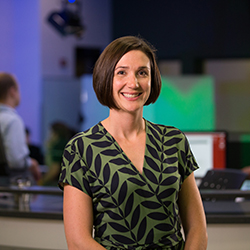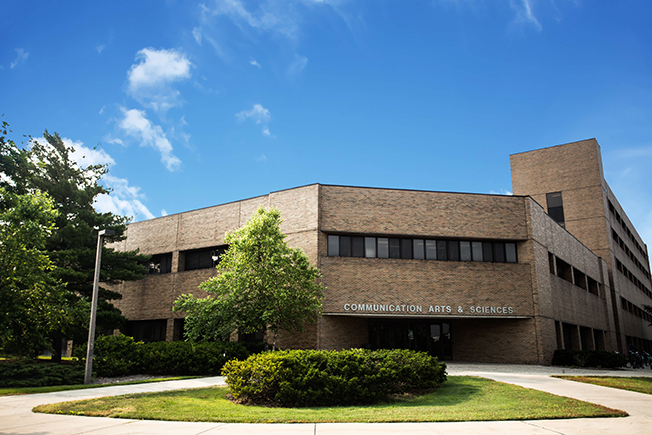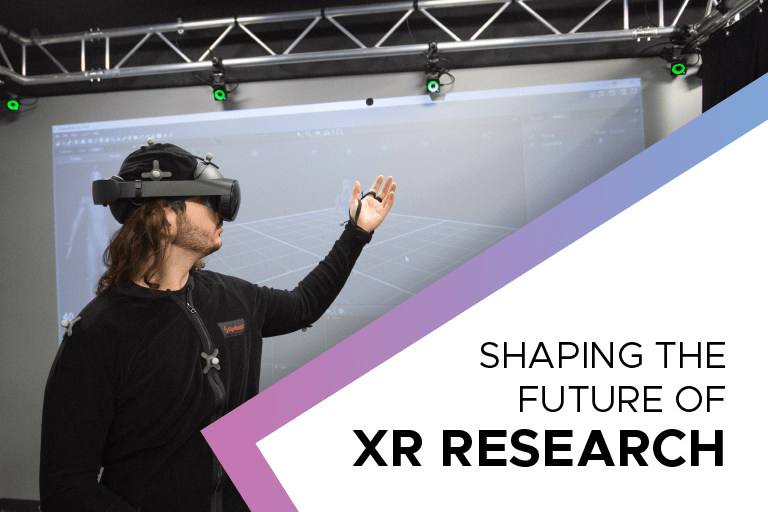Neurocognitive Communication
We're pioneering interdisciplinary research combining the field of communication science with cognitive neuroscience, psychophysiology, media psychology, neurolinguistics and neuromarketing. Our research labs are full of ComArtSci faculty and students exploring how communication happens in the brain. We're using methods such as fMRI, EEG, and fNIRS, as well as galvanic skin response and heart rate monitors. These measures provide us with new insights into the hidden processes that underlie communication and its effects on behavior.
Featured Research
Brain activity, heart rate, sweaty palms - these biological measures provide rich streams of data to better understand human communication.
Featured Video
Researcher Ralf Schmäelzle from ComArtSci's Department of Communication is researching neurocognitive communication and social networks, looking inside the brain to discover the impacts our social networks have on how our brains operate.
Featured Faculty
Faculty

Ralf Schmälzle
Associate Professor of Communication ScienceDepartment
CommunicationRalf Schmälzle, Ph.D. (SHMAL-ts-lee, 拉尔夫·舍马尔兹勒) is an Associate Professor of Communication Science in the Department of Communication at Michigan State University. His research focuses on brain responses to real-life messages in the domains of health communication and entertainment media. He is cross-trained in communication and psychology, and integrates methods from cognitive neuroscience and AI.
Contact
Faculty

Dar Meshi
Associate ProfessorDepartment
Advertising + Public RelationsDar Meshi investigates social media use and web3. He earned his B.S. in biology from the University of California at Los Angeles, and his Ph.D. from Columbia University in New York. After his Ph.D., Dar spent some time in New York working at advertising agencies like Ogilvy and Mather.
Contact
Faculty

Faculty

Courtney Venker
Assistant ProfessorDepartment
Communicative Sciences & DisordersContact
Faculty

Laura Dilley
Associate ProfessorDepartment
Communicative Sciences & DisordersLaura Dilley, Ph.D, is an Associate Professor in the Department of Communicative Sciences and Disorders. She received her B.S. in Brain and Cognitive Sciences in 1997 from MIT and her Ph.D. in Speech and Hearing Biosciences and Technology from MIT and Harvard in 2005.
Contact
Faculty

Bridget Walsh
Associate ProfessorDepartment
Communicative Sciences & DisordersDr. Bridget Walsh is a certified speech-language pathologist, Brandt-Endowed Associate Professor, and Director of Undergraduate Studies in the Department of Communicative Sciences and Disorders. Dr. Walsh directs the Developmental Speech Laboratory where she and her team research the development of stuttering and its adverse impact on children.
Contact
Faculty

Rabindra Ratan
Professor and AT&T Endowed ChairDepartment
Media & InformationDr. Rabindra (Robby) Ratan runs MSU's Social and Psychological Approaches to Research on Technology-Interaction Effects (SPARTIE) Lab: www.spartie.org. His research examines research on how media technologies (e.g., avatars, agents/AI, VR, online games) influence meaningful outcomes (e.g., equity, well-being, motivation) across societal contexts (e.g., education, health, industry).
Contact
Centers and Labs
The Media and Advertising Psychology Lab is focused on the study of media and advertising using biopsychological approaches, methods and theories.
The Cognitive Neuroscience of Language Development Lab conducts research on neurocognitive mechanisms that underlie language development and disorders in monolingual and bilingual children. The lab has a focus on reading, studying neural correlates of reading in bilingual and multilingual children and adults. It also studies early identification and intervention of developmental dyslexia using a multimodal neuroimaging method.
The Neuroscience of Messages Lab follows messages under the skin and examines the responses they evoke. We study messages across a variety of communication contexts, including health communication, political communication, interpersonal communication, and entertainment. Our main research tools include functional Magnetic Resonance Imaging (fMRI), electroencephalography (EEG/ERP), and related imaging methods. We combine these methods with self-report and linguistic measures, and behavioral testing.
The Center for Avatar Research and Immersive Social Media Applications (CARISMA) Lab opened in the fall of 2016. The department recruited Professor Gary Bente from the University of Cologne to lead the lab.
The CARISMA lab focuses on the interdisciplinary study of the effect of virtual reality (VR) experiences on human interaction and draws on basic research from fields like communication science, psychology, education, linguistics, computer science and engineering to refine and develop virtual reality technology for use in areas like education, training, therapy and rehabilitation and e-commerce.
The Social and Media Neuroscience Lab investigates how the human brain processes socially communicated information. The lab is especially interested in how information conveyed through social media motivates us and influences our decisions. To answer our research questions, we conduct behavioral experiments in the lab, online, and while collecting neuroimaging data with an MRI scanner. Ultimately, with the knowledge gained by our research, we hope to contribute to a better understanding of socially motivated human behavior.
The Michigan State University (MSU) Speech Lab investigates speech perception and production using a wide range of approaches. One of our goals is to better understand the mechanisms underlying both normal and disordered speech perception and production. A particular focus of our lab's research at the moment is to understand how the quantity and quality of parent/child communication affects that child's development of speech comprehension and production. We are especially interested in how speech and language input affect development in infants who have disorders that affect hearing. Another focus of the lab is in researching the neuro-cognitive mechanisms underlying speech prosody (defined as the pitch, timing, rhythm, and loudness of speech). Finally, recent research in the lab aims to identify the interactions between social psychology and speech perception. The principal investigator of the MSU Speech Lab is Dr. Laura Dilley.
Learn More about the MSU Speech Perception and Production Lab
Pioneering Research

Neurocognitive Communication is one of a number of thematic, collaborative research interest areas in ComArtSci. Although graduate students apply to one of the three doctoral areas or any masters areas in the college, they may become research collaborators in any of the interest areas. For example, students specializing in advertising, communication, and journalism participate in the Neurocognitive Communication interest group.
For More Information
Contact the college for further information
Contact Us
Michigan State University
Communication Arts and Sciences Building
404 Wilson Road
East Lansing, MI 48824
Follow us on Facebook, Instagram and Twitter



